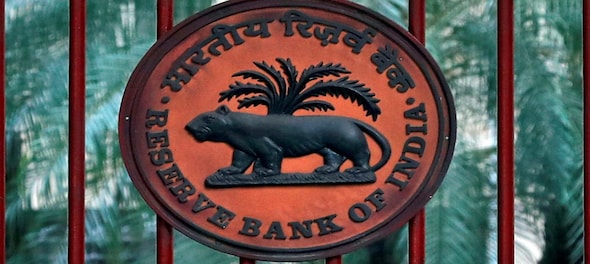
The Reserve Bank of India (RBI) has flagged falling government revenue as a threat to the overall fiscal numbers -- with tax and non-tax revenues lagging way behind targets -- saying this along with weaker private consumption and investment could prove to be a challenge.
The central bank, however, said amidst all these negatives the nation's financial system remains resilient with the asset quality of banks improving (NPAs remaining stable at 9.3 percent as of September as same as March 2019) thanks to the efforts of both banks and companies to clean up their balance sheets.
The warning assumes importance from many angels as revenue mop-up has been falling and budgeted expenditure (fiscal deficit) has crossed 107 percent as of November, putting a big question mark on the government ability to meet the 3.3 percent fiscal targets.
The negative comments are also prescient as GST collection which has been the mainstay of the government has grown just 2.5 percent so far this year, against a budgeted 14 percent, while massive corporate tax cuts have given away Rs 1.45 lakh crore of budgeted revenue and has slipped 5.2 percent as of the third quarter.
What is more pertinent is the divestment revenue. Of the Rs 1.05 lakh crore budgeted for the year, only 17 percent have been achieved so far. The only silver lining is the personal income tax collection which has grown marginally to Rs 33,000 crore from Rs 24,000 crore. Cumulative advance tax collection till Q3 stood at Rs 2.51 lakh crore as against Rs 7.96 lakh crore year-on-year.
Direct tax collections, net of refunds, for this fiscal grew a mere 0.7 percent till December. The target is Rs 13.35 lakh crore. Refunds increased by 26.6 per cent compared to the same period last year.
Gross direct tax collection till Q3 touched Rs 8.34 lakh crore against Rs 7.96 lakh crore in the same period last year. But net tax collection stood at Rs 6.57 lakh crore compared to Rs 6.7 lakh crore, according to a media report quoting taxmen.
"While the fiscal deficit numbers have improved over the years, revenue shortfall amidst weaker private consumption and investment could challenge fiscal parameter," the RBI said in its 25th edition of the financial stability report released Friday.
"The nation's financial system remains stable notwithstanding weakening domestic growth," the FSR said, adding all major risk groups such as "global risks, risk perceptions on macroeconomic conditions, financial market risks and institutional positions" were perceived as medium risks affecting the financial system.
However, perception of risks on various fronts like domestic growth, fiscal, corporate sector and banks' asset quality increased between April and October 2019, it said.
Amidst all these, growth has been screeching south with GDP hitting a 25-quarter low of 4.5 percent in Q2 forcing a rash of growth revisions ranging from 4.6 to 5 percent for the year-a steep fall from 7.4 percent by RBI itself.
This extended sequential quarterly deceleration was led by a sharp slowdown in gross fixed capital formation and sluggishness in private final consumption expenditure. The report also notes that the slowdown would have more pronounced had it not been for government consumption, which provided a cushion to slackening demand conditions.
Noting that merchandise exports have contracted by 2 percent in April-November as against an expansion of 10.9 percent a year, the report warns that with global growth and trade projected to slow down further, exports could face challenging demand conditions going forward.
All this has both the trade deficit and current account deficit rising to 2 percent of GDP from 0.7 per cent in the preceding quarter. However, net capital flows were higher in Q1 with net FDI inflows of $13.9 billion compared to $9.6 billion in the corresponding quarter of the previous year.
Overall, net capital flows exceeded CAD financing requirements and led to an accretion of foreign exchange reserves, which is at an all-time high of $454.9 billion as of December 20.
On the credit, the report says gross loans and advances noticeably slowed from 13.2 percent in March 2019 to 8.7 percent in September 2019. But the report warns that the gross NPA ratio may rise to 9.9 percent by September 2020 from 9.3 in September 2019.
"The stress tests indicate that under the baseline scenario, the GNPA ratios of banks may increase to 9.9 per cent by September 2020, due to change in macroeconomic scenario, the marginal increase in slippages and the denominator effect of declining credit growth," the report said.
First Published: Dec 27, 2019 10:18 PM IST
Check out our in-depth Market Coverage, Business News & get real-time Stock Market Updates on CNBC-TV18. Also, Watch our channels CNBC-TV18, CNBC Awaaz and CNBC Bajar Live on-the-go!


Fight of heavyweights in Sambalpur where farmers, weavers hold the key
May 17, 2024 12:25 PM
Odisha: Fight of heavyweights in Sambalpur where farmers, weavers hold the key
May 17, 2024 10:22 AM
Lok Sabha Election 2024: What rural Delhi wants
May 16, 2024 10:10 PM
Over 50 onion farmers detained in Nashik ahead of PM Modi's visit
May 16, 2024 11:14 AM

